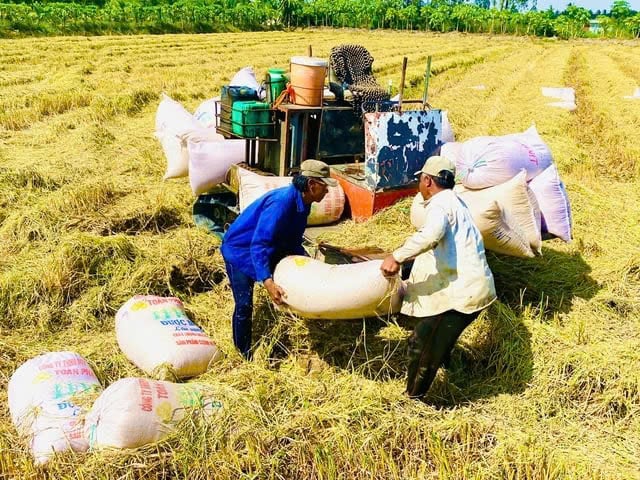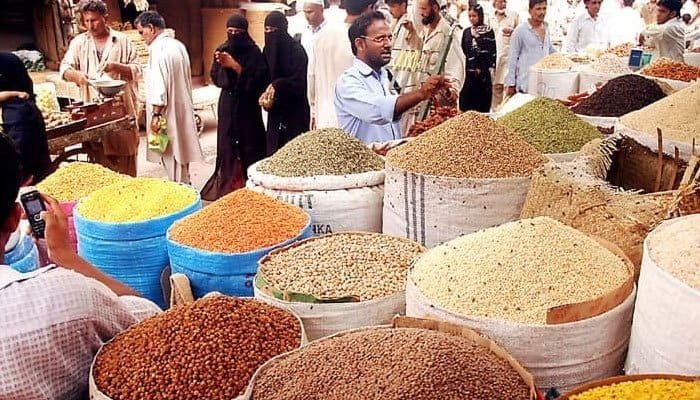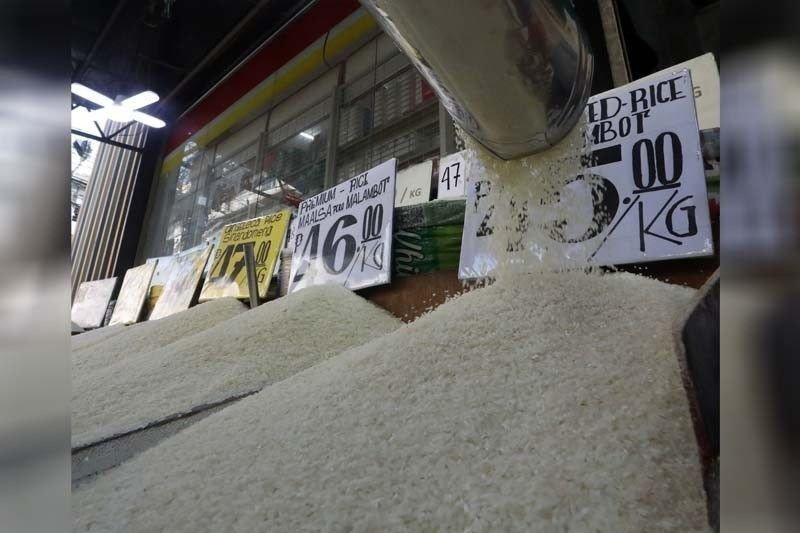Tags
Vietnam’s rice industry faces supply-demand dilemma: insiders
By Thanh Thanh, Minh Hue
The Vietnamese rice industry is grappling with a dilemma: whether to expand its export markets despite the risk of insufficient domestic supply, or to refrain from expanding, which could lead to price pressure, according to insiders.

At a seminar titled “Positioning Vietnamese Rice in the New Era,” organized by the Vietnam Food Association (VFA) on Friday, VFA chairman Do Ha Nam highlighted the surge in Vietnam’s rice exports to 7.5 million tons in 2022 and over 9.18 million tons in 2024 from 6 million tons in the previous years, generating over $5.7 billion in revenue.
The total rice exports in the first quarter of this year were estimated at 2.25 million tons, up 2% year-on-year.
In addition to domestic production, Vietnamese businesses also imported rice from Cambodia for export, with approximately 3 million tons in 2023 and an estimated 3.8 million tons in 2024, Nam added.
“We have no surplus rice available for sale. Both global supply and demand are on the rise, but production has not been able to keep pace with demand, leading to rising prices,” he said.
When asked whether Vietnam should expand its markets, the VFA chairman acknowledged that while Vietnam has lost its share of the Indonesian market, it has been gradually strengthening its position in traditional markets like the Philippines and Africa, thanks to its superior product quality and competitive pricing.
“Vietnamese businesses have altered their production practices and conducted more thorough market research,” Nam explained.
As a result, Vietnam’s rice export markets have become more diverse, covering Asia and Africa (18%); the Middle East (2%); Europe, America, and Oceania (4%). Asia remains the dominant market, accounting for around 72% of total exports.
Nam emphasized that while expanding export markets is crucial to stabilize sales of Vietnamese rice, it is important to tailor strategies for each specific market. For regions like Africa, factors such as payment terms (e.g., debt or extended payment schedules), financial impact, and credit limits must be considered.
Nguyen Anh Phong, deputy director of the Institute of Policy and Strategy for Agriculture and Rural Development (IPSARD), under the Ministry of Agriculture and Environment, commented: “Vietnam has been quick to capture rice markets, and Vietnamese businesses are agile in identifying the most advantageous market segments.”
“The ministry consistently creates the best environment for businesses, offering support in storage, rice varieties, quality control, and market access negotiations,” he added.
Phong also highlighted the growing demand for high-quality branded rice, noting that businesses are playing a key role in shaping the market and defining the value of Vietnam’s rice supply chain.
According to Phong, Vietnamese businesses are actively seeking new potential markets. The Ministry of Agriculture and Environment has tasked the institute with reviewing and analyzing new markets, identifying which types of rice can be introduced, assessing competitors, and determining how to capture more market share.
“We have a program to develop one million hectares of high-quality, low-emission rice. In negotiations with other countries regarding rice exports, we emphasize that Vietnam is the first country in the world to produce high-quality, low-emission rice on a large scale. This is a powerful marketing tool for premium markets,” he said.
Removing obstacles for enterprises
As one of Vietnam’s leading export sectors, the rice industry faces financial challenges, tax refund issues, and logistics infrastructure gaps.
At the conference, the VFA representative urged government agencies to provide support through financial policies and infrastructure development to facilitate the export of food products, including rice.
Vietnam aims to continue improving the quality and value of its rice exports, focusing on reducing the share of low and medium-grade white rice, while increasing the proportion of fragrant, Japonica, and specialty rice, he added.
By 2025, the share of low and medium-grade white rice is expected to be reduced to no more than 15%, while fragrant, Japonica, and specialty rice will make up about 40%. By 2030, these targets will become even more ambitious, with about 10% and 45%, respectively.
Nam stressed that Vietnam needs to continue enhancing rice quality and diversifying its products to create a competitive edge in the global market. Building an effective rice value chain, from production to consumption, is essential to increasing added value for farmers and businesses. Close coordination between regulators, businesses, and farmers is critical to ensuring the interests of all stakeholders.
To achieve these goals, the VFA leader recommended that the Ministry of Agriculture and Environment continue implementing policies to support the development of production areas, rice variety research, and trade promotion.
The State Bank of Vietnam should consider offering more unsecured loans to rice businesses, and the Ministry of Finance should provide clearer guidance on VAT refund procedures to support enterprises.
The Ministry of Industry and Trade should increase its export-related information, adjust import-export management, analyze market trends, and negotiate market access, while the Ministry of Construction should accelerate the development of Cai Cui port and upgrade the Quan Chanh Bo canal in the Mekong Delta to facilitate exports.
Nam also called on local governments to continue planning and developing specialized production areas, assess soil conditions, and attract investment in rice processing.
https://theinvestor.vn/vietnams-rice-industry-faces-supply-demand-dilemma-insiders-d15172.htmlPublished Date: April 7, 2025






